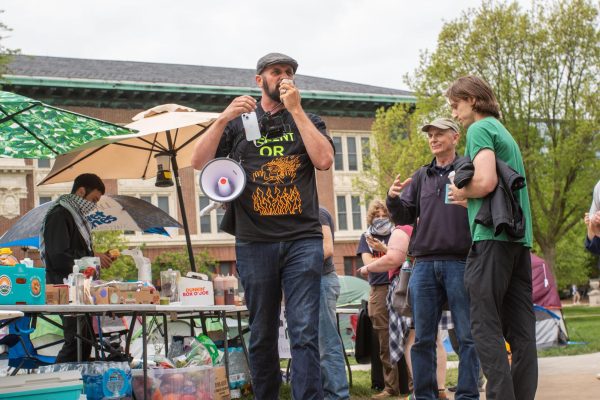In health care today, pain is often viewed as “the fifth vital sign.”
Yet, focus on pain treatment has led to an upsurge in the prescription of narcotic painkillers in Illinois as well as an increase in prescription drug abuse.
In 2006, around 11,000 grams of oxycodone, a powerful narcotic painkiller, was distributed to the Champaign area, according to a Drug Enforcement Administration report. This is approximately a 700 percent increase from 1997, in which about 1,500 grams of oxycodone were distributed.
Medical professionals say this trend has only continued as doctors placed a high priority on treating pain.
Part of the problem, Dr. John Hill, head of addiction medicine at Carle Foundation Hospital,said, is that pain itself is a multi-faceted aspect of human physiology.
Get The Daily Illini in your inbox!
“Pain is a pretty complicated phenomena, it involves a pain receptor, it involves nerves, the spinal cord, the thalamus and your inner cortex,” Hill said. “Pain is experienced by humans, not just as a pain event but as an emotional event, too.”
But the desire to alleviate pain, coupled with the addictive potential of drugs like oxycodone and hydrocodone, has caused problems.
A 2010 report by the Government Accountability Office found that 170,000 Medicare beneficiaries received prescriptions from five or more medical practitioners for the 12 classes of frequently abused controlled substances in 2008.
The practice of pursuing prescriptions from multiple doctors — known as “doctor shopping” or “pharming” — has become one avenue for addicts to acquire large quantities of prescription drugs.
“General practitioners and adult medicine doctors don’t look at ways that pain can be handled without using these powerful drugs,” said Elaine Bruner, an addictions clinician at Recovery Options of Champaign County.
Bruner said effective background checks on patients is less than feasible when doctors see over 20 patients a day, but she stressed that doctors should take a greater interest in whether a patient is a past or potential substance abuser.
But background checks for patients don’t address the real issue, said Ken Polky, executive director of the Human Resource Center in Danville and Paris.
Polky said he believes doctors are also accountable.
“It’s my general feeling that primarily driven from consumer’s urging, all prescription medication tend to be over-prescribed beyond what is really necessary,” Polky said.
“Whether it’s for pain or for attention deficit disorder for children, or for depression for adults, I don’t think enough is done to work on the non-medication side of the problem.”
Examples of non-medication options are physical therapy, acupuncture or meditation.
However, narcotic medication like oxycodone and hydrocodone have appropriate uses, said Amanda Denno, a nursing instructor at the Lakeview College of Nursing.
“Narcotic analgesics work well for chronic cancer pain. It just depends on what is relieving pain for that patient and what isn’t,” Denno said.
She added that for some patients, narcotics are the only thing that works.
Hill also pointed out that pain treatment usually is not encompassed by narcotics, calling the process “multi-factorial.”
By setting up consultations with pain specialists along with substance abuse treatment, Hill said doctors can reach a clear understanding with patients and potentially prevent future problems.







